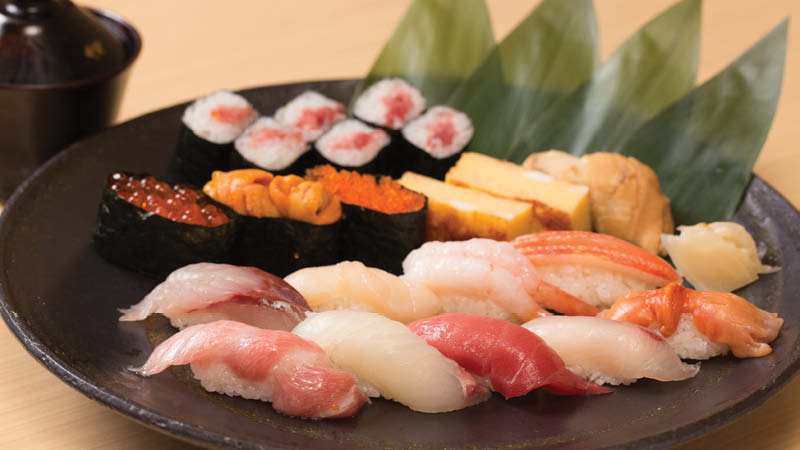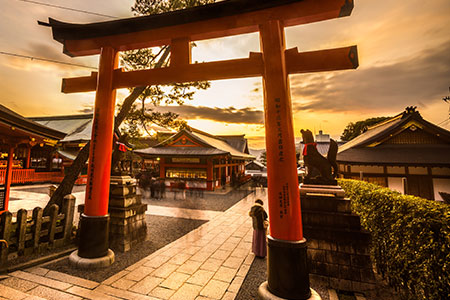Tours
Welcome to Japan! A land of intriguing contradictions. The nation is an archipelago made up of more than 14,000 islands with three quarters of the land being either forest or mountains, leaving little for residential, industrial, or farming areas. Yet it is densely populated for its size. Its leaders have ranged from the samurai to the shogun to the emperor. Its highest point – Mt. Fuji – is beautiful and sacred, as are its many temples and shrines. Its capital city – Tokyo – is a bustling metropolis containing anything one might desire, from food to entertainment to art and culture. Kyoto, a modern city with an ancient past, is filled with serene religious buildings, glorious gardens, and UNESCO World Heritage Sites.
Japan awaits with open arms!
Destination Must-See's

Tokyo:
Until the 19th century, Tokyo was known as Edo. It started out as a fishing village, but grew to become the seat of a feudal government in the early 17th century. Emperor Meiji moved the capital from Kyoto to Edo in 1868 and renamed it Tokyo, or “Eastern Capital.” By then it had become one of the world’s most populous cities. After World War II it was completely rebuilt. Today, Tokyo is more than just a large city – it is a metropolis with 23 wards. It provides all that one can desire in the way of culture, art, cuisine, and shopping. From the Ginza district to the Sumida River there is so much for today’s traveler.

Kyoto:
Kyoto, or “capital city,” was home to the emperor from 794 to 1868. It was Japan’s political and cultural center for 1,100 years, until the capital was moved to Tokyo. As Kyoto was largely spared from damaging air raids of World War II, numerous temples, shrines, castles, and palaces are still standing today. Among them is the Kiyomizu-dera Temple. Founded in 780, its name means “pure water” and refers to the Otowa Waterfall on-site. It is one of the 17 Monuments of Ancient Kyoto (UNESCO). Nijo Castle, another one of the 17 monuments, was built in 1603 as the residence of the shogun (military dictator). The Kyoto Imperial Palace was where the Imperial family lived until 1868. Kyoto is also well-known for Gion – its most famous Geisha district – and for its beautiful gardens.

Hiroshima:
Hiroshima will forever be remembered for the devastating event of August 6, 1945: the dropping of the first atomic bomb. Nearly everything within a mile of where the bomb fell was destroyed, and some 80,000 people perished. There were predictions that the city would no longer be habitable. Today, Hiroshima has been rebuilt and a large park was constructed, containing several memorials to the victims. The Peace Memorial Museum focuses on the dropping of the bomb and its aftermath; the Atomic Bomb Dome was one of the few buildings to remain standing afterward; and the Memorial Cenotaph is an arched tomb for those who died. Also worth a visit is Hiroshima Castle. Originally built in 1589, it was five stories tall and was surrounded by a moat. It was destroyed in 1945, rebuilt in 1958, and is now a museum featuring Samurai culture.

Takayama:
Takayama means “tall mountain,” and is a city in the mountainous Hida region. During the feudal ages, it became known for its high-quality timber and skilled carpenters. Yet it was kept fairly isolated due to the surrounding mountains. Today it is known for its well-preserved old town. The Hida-Kokubunji Temple is the oldest structure, originally built in 746. It features a huge ginko tree, said to be 1,200 years old, and a three-storied pagoda. The Hida no Sato Folk Village, with its traditional wooden farm houses, is an open-air museum. There are also two morning markets, or Asaichi, held on a daily basis, as well as sake breweries. It is the perfect place for a walk.
Destination Must-Do's

Japanese Cuisine:
No trip to Japan would be complete without experiencing its flavorful dishes. A bowl of gohan, or cooked rice, is a central part of Japanese meals. From there we go to sushi, famous both outside of and inside Japan. Sushi is made from cold boiled rice, moistened by vinegar and typically combined with seafood and vegetables. Sashimi is thinly sliced raw food – most often seafood. (Japan is an island, after all.) The most popular noodles are soba (buckwheat flour), udon (wheat flour), and ramen, a noodle soup dish. Tempura is lightly battered, deep-fried seafood and vegetables. Yakatori refers to grilled chicken skewers you can try at a yakitori-ya. Be sure to enjoy green tea with your meal, as the Japanese do.

The Tokyo Skytree:
The Tokyo Skytree is the perfect way to get a panoramic view of the city and beyond. A television broadcasting tower, this Tokyo landmark is almost 1,200 feet high and is the tallest structure in Japan. A large shopping complex and an aquarium are at its base, but it’s the two observation decks that warrant a visit. Head to the “world’s highest skywalk” for views that will take your breath away!

Temples and Shrines:
Temples and shrines are found all over Japan, with most municipalities having at least one temple. (Kyoto has 1,200.) Temples are Buddhist places of worship, and they store and display sacred objects. They typically consist of a main hall, a lecture hall, a pagoda, gates, bells, and a cemetery. Some were monasteries in the past, and some still are. Shrines are Shinto places of worship. They are the dwellings of the kami, or Shinto gods. Sacred objects are stored in the innermost chamber, and are not to be seen by anyone. People visit shrines to pay respect to the kami, or to pray for good fortune. The approach to the shrine is marked by Torii gates; the komainu, a pair of guardian dogs or lions, is found on each side of the shrine’s entrance.

Hakone:
Hakone has been a hot springs resort for centuries. There are more than a dozen hot springs, with Yumoto being the most famous. There is much natural beauty to be appreciated here. Lake Ashinoko, or Lake Ashi, was formed in a volcanic caldera after an eruption 3,000 years ago; it is the perfect place for a scenic boat ride with views of Mt. Fuji. The Hakone Shrine, on the shores of Lake Ashi, is Hakone’s most famous Shinto shrine. Three striking Torii gates mark the approach to the shrine. Odawaro Castle is the closest castle to Tokyo, some 60 miles away. Originally built in the 15th century, it has been rebuilt twice since then. Hakone remains a popular destination for the Japanese and tourists alike.






